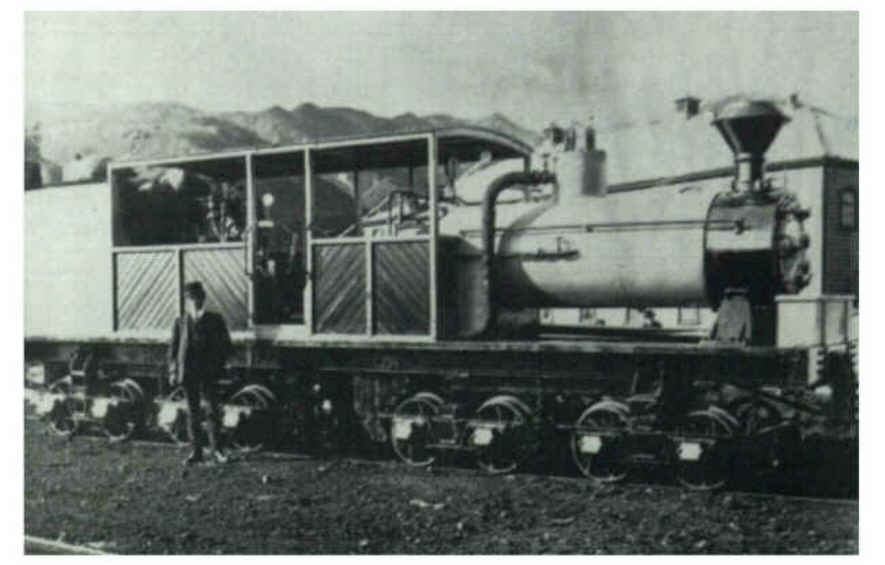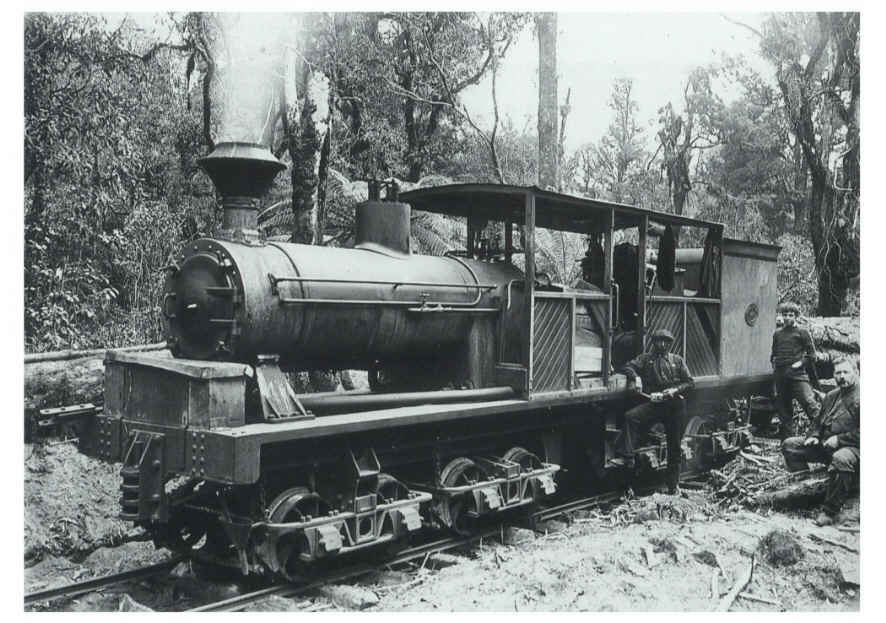Here you go.
What track Diameter/Radius/Chord/ Arc is apropos for a 2-10-2?
I’ll pass it’s just too dag burn big for my yard.
In 1975 I nearly bought a GN caboose for $2000, delivered to the closest siding of my choice… but couldn’t get the location to agree.
That’s my brush…
John
I guess you would just have to run her back and forth, instead of roundy round.
John Caughey said:
What track Diameter/Radius/Chord/ Arc is apropos for a 2-10-2?
I’ll pass it’s just too dag burn big for my yard.
In 1975 I nearly bought a GN caboose for $2000, delivered to the closest siding of my choice… but couldn’t get the location to agree.
That’s my brush…
John
Here’s more grief for ya…
The loco “Madam Queen” is a 2-10-4. (http://largescalecentral.com/externals/tinymce/plugins/emoticons/img/smiley-wink.gif)

with 10 drivers, 5 driving axles, I always wondered how wide the curves have to be for such a beast.
Thanks Joe
You’re welcome John. (http://largescalecentral.com/externals/tinymce/plugins/emoticons/img/smiley-cool.gif)
There’s a lot of talk here about the kind of a radius you would need to turn this locomotive. Well, it’s large. That rigid wheelbase is a “killer”. There is one engine even larger than the Texas 2-10-4. That is the 9000 series Union Pacific 4-12-2 and this IS a rigid wheelbase loco! I’m not sure, but I believe one of the last survivors of this engine is on display at the Fairplex train museum exhibit in Pomona, CA.
At Los Angeles Live Steamers, we have a 1.6 inch scale (considered fine scale in the ride-on stuff) 2-10-4 Texas and it has a “tendency” to try to straighten curves on our layout. Our mainline radius is about 70 feet. I believe this loco would be a great deal “happier” with 90-100 foot radii!
The 2-10-4 and the 4-12-2 were really big, but would you believe a 2-14-4? Here’s one for you guys with really broad curves … the AA20-01, also known as “Stalin’s Engine.”
In Russia in the 1930s railways were in almost constant crisis, mainly as a result of under-resourcing and political interference. Problems were to be solved in a “Bolshevik manner” ie using new and radical ideas, promoted by non-technical commissars and theoreticians. The results were usually unhappy.
This notorious design was built at Lugansk Works, emerging in December 1934. It became famous as the largest non-articulated locomotive in Europe, and in particular for having the most coupled axles in the world. A few countries produced 12-coupled designs, but nobody else tried 14. It was intended for heavy haulage on light 78 lb rails, with a modest loading of 20 tons per axle, on the Moscow-Donbass route. (The “20” in AA-20 refers to 20 tons per axle) It successfully made a publicity trip to Moscow in Jan 1935, but never entered service. No details are available of trial runs.
In (unsuccessful) attempts to get the AA-20 round curves, the middle three axles had flangeless wheels, and universal joints were include in the coupling rods between first and second, and sixth and seventh, axles.
It was clear, though never publicly admitted, that the AA20 was a complete disaster. It spread the track, wrecked every set of points it passed over, and derailed almost every time it moved. Steaming was poor, and the locomotive too powerful for existing couplers and too long for the turntables. It was totally unusable. After 1935 it was stored for 25 years at the Shcherbinka test facility and finally scrapped in 1960.
Here is one of the very few pictures of the AA20-01 2-14-4 locomotive.

Bob
Holy Frijoles! Now that is one monster of a locomotive. So, I guess bigger isn’t always better.
How about a 16 wheeled logging locomotive


David Maynard said:
Holy Frijoles! Now that is one monster of a locomotive. So, I guess bigger isn’t always better.
How about a 16 wheeled logging locomotive

HAS!
I sure like that big logging engine, both the full size and the model. Does anyone know how many such logging engines were built, and who the builder was?
If I had as much money as Bill Gates, Warren Buffet, and Carlos Slim combined I would buy that big engine and get it moved and restored. 'Course if wishes were wings, frogs would fly.
David Maynard said:
I guess you would just have to run her back and forth, instead of roundy round.
I don’t think driving it one foot counts as point to point.
Bill Ness said:
I sure like that big logging engine, both the full size and the model. Does anyone know how many such logging engines were built, and who the builder was?
If I had as much money as Bill Gates, Warren Buffet, and Carlos Slim combined I would buy that big engine and get it moved and restored. 'Course if wishes were wings, frogs would fly.
Bill;
Thanks for the link, David. So there were 4 made by Price and they worked quite well. Interesting.
But they were new Zealand locomotives. Not something usually seen nor modeled in the states. That’s the kind of stuff I like.
FYI:
Hallmark does not exist anymore. Bobbye Hall passed away several years ago and her Hobby shop at the address on the box is closed also.
She was a classy lady and visited her store many times, even meet Malcom Furlow there once.
Joe Zullo said:
John Caughey said:
What track Diameter/Radius/Chord/ Arc is apropos for a 2-10-2?
I’ll pass it’s just too dag burn big for my yard.
In 1975 I nearly bought a GN caboose for $2000, delivered to the closest siding of my choice… but couldn’t get the location to agree.
That’s my brush…
John
Here’s more grief for ya…
The loco “Madam Queen” is a 2-10-4. (http://largescalecentral.com/externals/tinymce/plugins/emoticons/img/smiley-wink.gif)